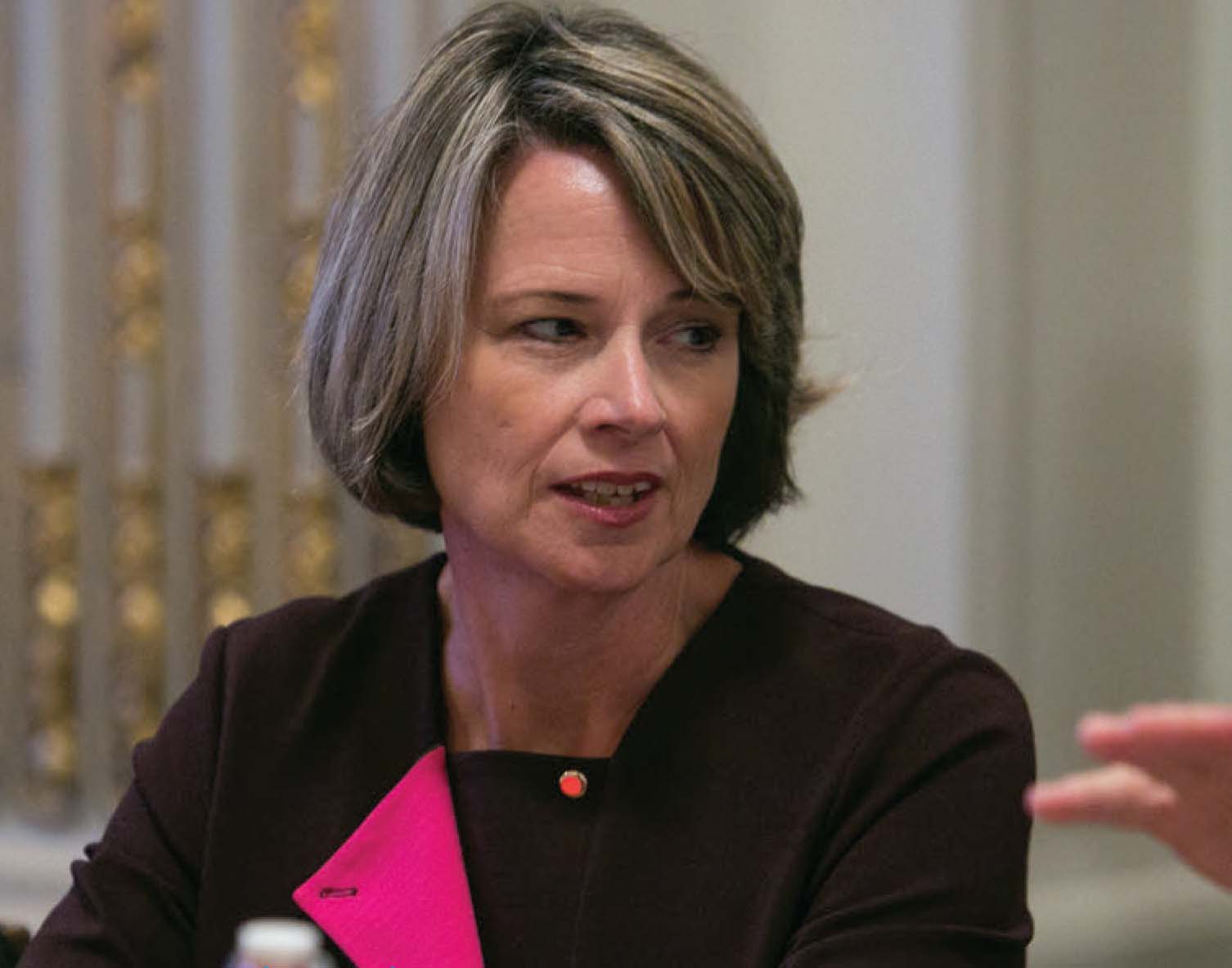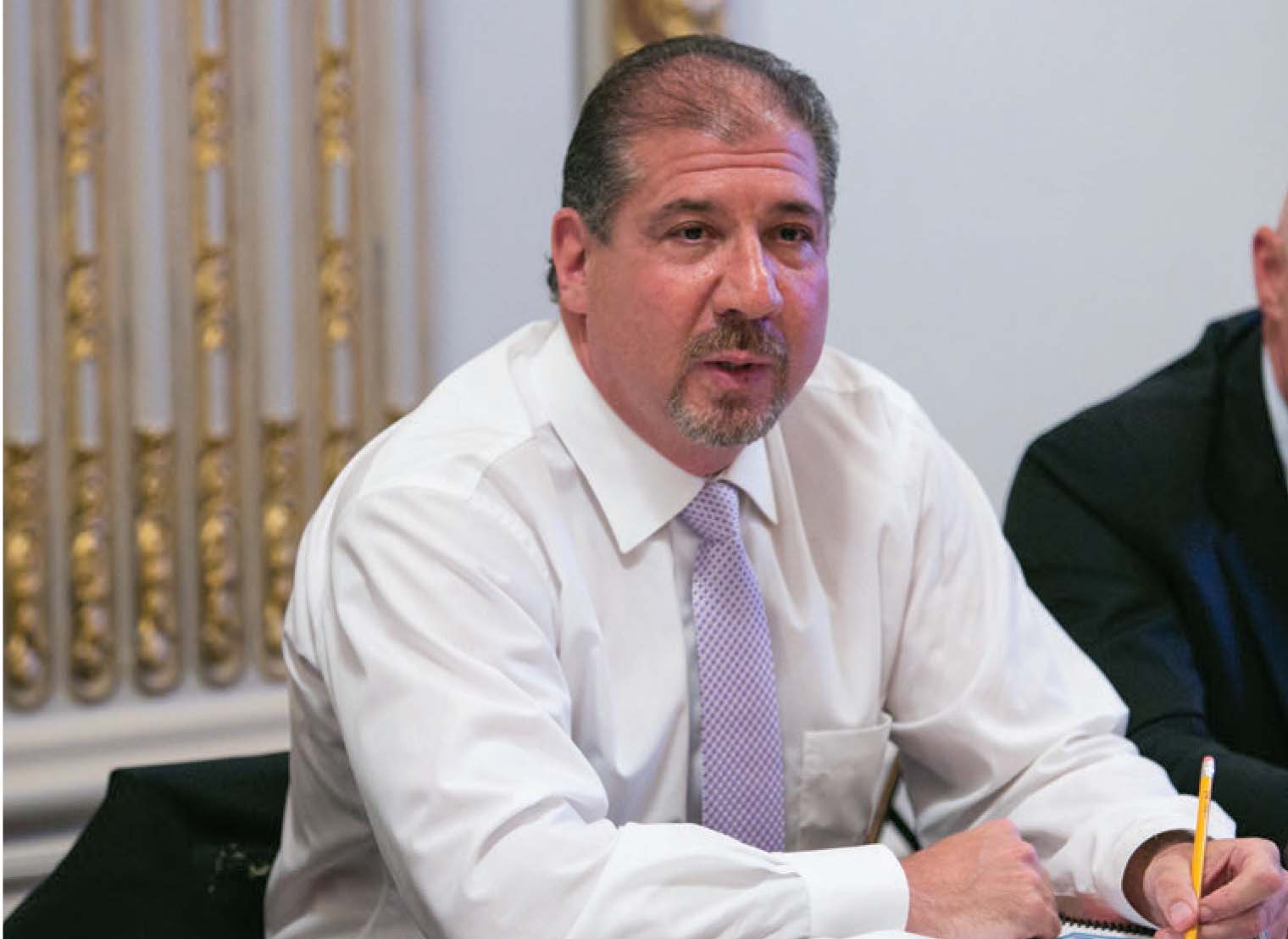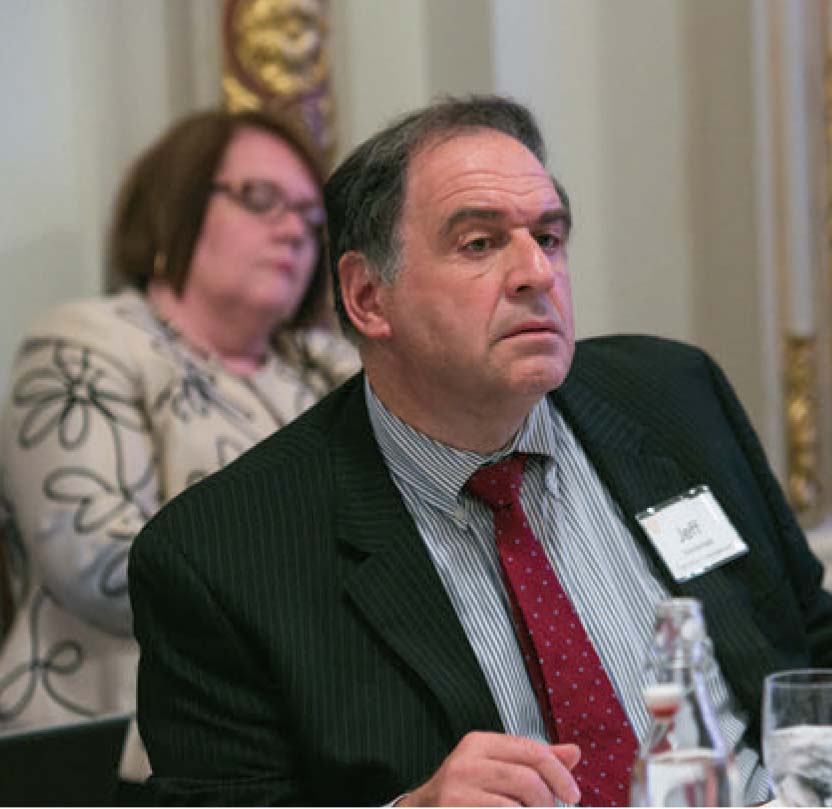
The phenomenon called “Big Data” might seem like something only the geeks in IT need to grapple with. But the use of data is exploding in all aspects of most every company’s activities with stunning speed, forcing CEOs to become personally involved in data issues and to rethink not only how their organizations are structured, but also what skills sets are needed to manage many functions.
Data collection and mining has emerged as a major opportunity, but also a major challenge—one for which getting it right demands CEO involvement, agreed participants in a recent Chief Executive roundtable held in partnership with the American Institute of CPAs (AICPA) and Chartered Global Management Accountant (CGMA) designation.
“Are you partnering yourself with not only the business owners but also chief financial officers and with IT to make sure that you’re doing the right collection, the right analytics?” asked Arleen Thomas, senior vice president for management accounting and global markets at the American Institute of CPAs (AICPA), noting that CEOs must often drive adoption. “Are you providing insight and making a difference? I truly believe it starts with you.”

A.G. Lafley, the current and former CEO of P&G and 2006 CEO of The Year, has experienced both the upsides and the frustrations of using data tools. In his second stint as the consumer goods company’s CEO, he is using those tools to completely restructure the sprawling P&G mix of businesses. In the past 10 months, he has sold businesses that represented 5 percent of the company’s profit, 15 percent of its sales and 40 to 50 percent of what he calls its complexity. “What data did we use?” Lafley recounts. “It was this simple—is it a business we think we should be in because we think it’s strategically interesting, structurally attractive and will give us the kind of return we want? Are we performing at a level where we’re delivering best in industry results? Do we think we can continue to bring the innovation and capability we need? There’s a ton of data, and we make judgments.”

Building a Consumer Portrait
Lafley also uses tools such as Net Promoter Score, which measures the loyalty of a company’s customers, to try to understand consumer behavior over a five-year future horizon. P&G also seeks to create even broader portraits of what its customers will want by obtaining what Lafley calls a “360-degree view.” “You’re trying to get it all in context,” he said. “I think the company of the past would just stare at your mouth and go through the usual product offerings. But now we have to step back and say, ‘Wow, that’s John’s mouth and John has all these other things going on in his life. Oral care has actually maybe a fair amount to do with heart health and maybe a whole bunch of other things which will be useful to him.’”
It can be difficult at times to use data to achieve an enterprise-wide perspective. “One of the biggest struggles I have is not the business-unit parochialism—it’s the discipline parochialism,” Lafley said. “I have my finance gang selling their world view of analytics. I have my mathematics jocks selling their view. I have researchers and scientists of all kinds and then I’ve got a whole bunch of marketing analytics. I don’t know if I have an elephant or a camel half the time because they’re telling me only about the part of the animal they touched.”

Building the bridges between different flows of analytics and dealing with the organizational ripple effects of doing that are clearly challenging. Mark Weinberger, CEO of EY, said his consulting firm, which consists of 200,000 employees in 152 countries, has created a position called the Chief Analytics Officer. “You have to have somebody as the center,” he said. The company also had to define the reporting relationship the many different units within EY would have with the analytics officer.
For older services that are arguably more entrenched, such as tax or audit, EY created dotted line, or matrix, reporting relationships to the center and built compensation systems that rewarded the right flows of data. Weinberger was able to gradually start getting buy-in from these units as well. But he also recognized that within the accounting practice, for example, he didn’t want an accountant “who did analytics on the side,” but rather a recognized data expert within that unit. That required some new personnel policies. Overall, “it’s working a lot better than it did, but I can’t tell you we have it all figured out,” he acknowledged.
Biotech firm Acorda Therapeutics uses data mining tools to better serve victims of multiple sclerosis. By tracking movements of patients as they navigate a resource website the company created, Acorda can glean insights about what its patients need without violating their privacy, says CEO Ron Cohen.
Don’t Dump “Soft” Data Methods
Data is at the very heart of ICE, recounted CEO Jeff Sprecher, whose company runs the New York Stock Exchange and 10 other global exchanges plus seven clearing houses and is seeking to standardize trading on those platforms. Sprecher recently created a data subsidiary that aims to achieve $1 billion in sales within the next year.
 “It’s been a mind shift for us, realizing that we’re actually a data company,” said Sprecher, who also shared an “aha” moment from a recent meeting with Thomas Farley, CEO of ICE’s NYSE Group. “I said, ‘I’m participating in this data roundtable, which will be weird because I don’t consume any of this data that you produce about market share and what customers are doing,’” he recounted.
“It’s been a mind shift for us, realizing that we’re actually a data company,” said Sprecher, who also shared an “aha” moment from a recent meeting with Thomas Farley, CEO of ICE’s NYSE Group. “I said, ‘I’m participating in this data roundtable, which will be weird because I don’t consume any of this data that you produce about market share and what customers are doing,’” he recounted.
“Farley responded: ‘No, you consume more data than any CEO I’ve ever met. You’re talking to a lot of people. You’re asking questions about people, and you’re gleaning insights. It’s not driven by a lot of reports.’” The moral? Coupling Big Data with good old-fashioned entrepreneurship is a winning combination.
Chief Executive Group exists to improve the performance of U.S. CEOs, senior executives and public-company directors, helping you grow your companies, build your communities and strengthen society. Learn more at chiefexecutivegroup.com.
0

1:00 - 5:00 pm
Over 70% of Executives Surveyed Agree: Many Strategic Planning Efforts Lack Systematic Approach Tips for Enhancing Your Strategic Planning Process
Executives expressed frustration with their current strategic planning process. Issues include:
Steve Rutan and Denise Harrison have put together an afternoon workshop that will provide the tools you need to address these concerns. They have worked with hundreds of executives to develop a systematic approach that will enable your team to make better decisions during strategic planning. Steve and Denise will walk you through exercises for prioritizing your lists and steps that will reset and reinvigorate your process. This will be a hands-on workshop that will enable you to think about your business as you use the tools that are being presented. If you are ready for a Strategic Planning tune-up, select this workshop in your registration form. The additional fee of $695 will be added to your total.

2:00 - 5:00 pm
Female leaders face the same issues all leaders do, but they often face additional challenges too. In this peer session, we will facilitate a discussion of best practices and how to overcome common barriers to help women leaders be more effective within and outside their organizations.
Limited space available.

10:30 - 5:00 pm
General’s Retreat at Hermitage Golf Course
Sponsored by UBS
General’s Retreat, built in 1986 with architect Gary Roger Baird, has been voted the “Best Golf Course in Nashville” and is a “must play” when visiting the Nashville, Tennessee area. With the beautiful setting along the Cumberland River, golfers of all capabilities will thoroughly enjoy the golf, scenery and hospitality.
The golf outing fee includes transportation to and from the hotel, greens/cart fees, use of practice facilities, and boxed lunch. The bus will leave the hotel at 10:30 am for a noon shotgun start and return to the hotel after the cocktail reception following the completion of the round.